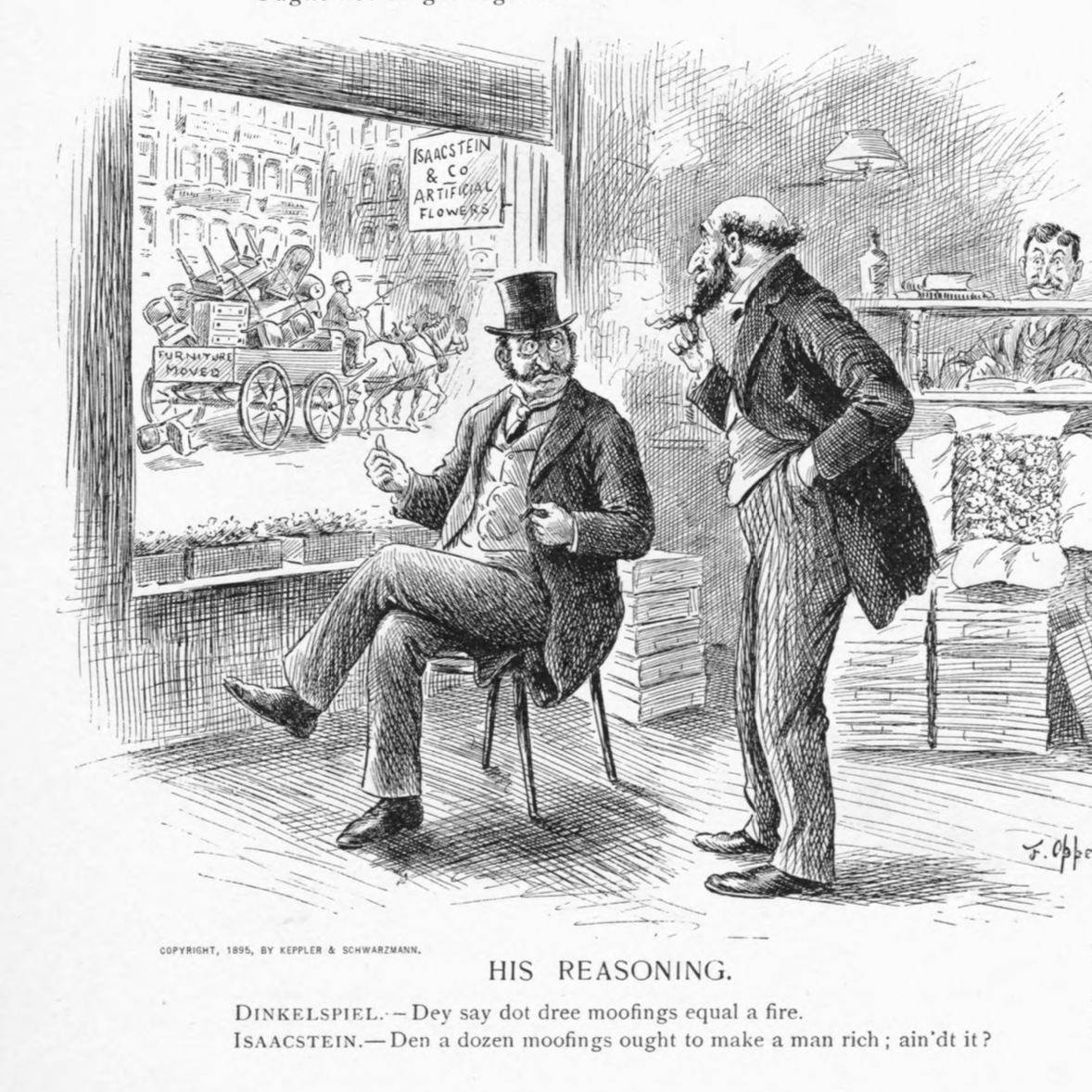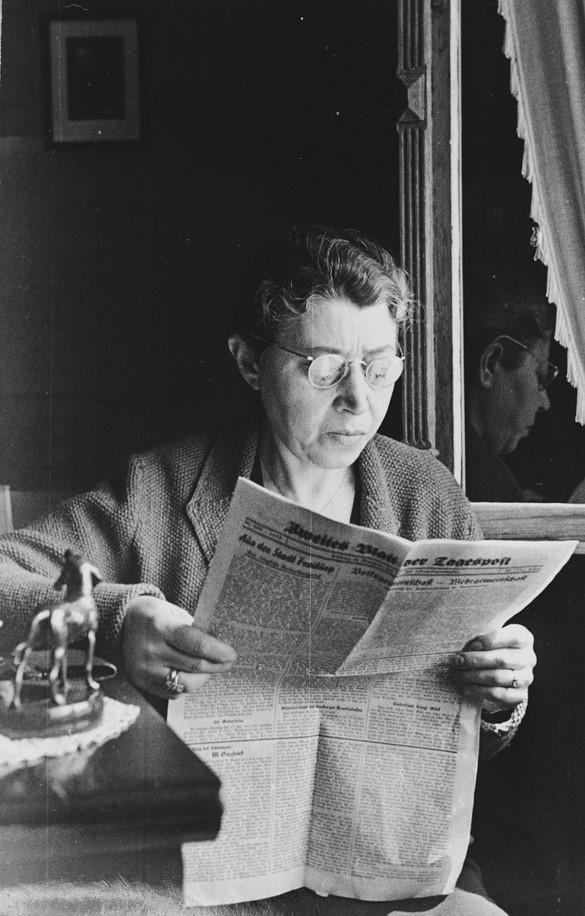Q&A: Katz Center Fellow Emmanuel Bloch on Shifting Conceptions of Modesty in Jewish Legal Codes
Steven Weitzman talks with Emmanuel Bloch about modesty norms in Jewish legal texts.

Steve Weitzman (SW): Emmanuel, it has been great to have you as a fellow. Your research has opened my eyes to how halakhah, Jewish law, is developing is the twenty-first century. First of all, is "Jewish law" the right translation for halakhah? How would you explain what halakhah is for those who do not study it?
Emmanuel Bloch (EB): On a classical level, “halakhah” is the name given to the collective body of Jewish religious laws, as they are derived by the rabbis from the written Torah (i.e., the Hebrew Bible) and the Oral Torah (i.e., the Talmud and its commentators). Halakhah is often described as the “way” a Jew is directed to behave and understood to encompass civil, criminal, and religious law. When conceptualized as a tool for collective and private governance, halakhah can certainly be translated as “Jewish law.”
However, I would contend that halakhah is much more than just a means of maintaining social order. It is also one of the greatest expressions—arguably, the greatest one—of Jewish creativity across the ages. To borrow from Robert Cover’s celebrated 1983 article “Nomos and Narrative,” halakhah cannot be reduced to its imperial element. It is also “paideic”—meaning expressive and reflective of communal aspirations.
Halakhah takes here the contours of a much wider cultural project. It tackles questions that the Western mind, heir to intellectual categories first proposed by the classical Greek philosophers, tends to intuitively classify as theology, ethics, folklore, exegesis, and sometimes even art and literature. Halakhah, understood as a mode of cultural discourse in which rules and underlying values are deeply intertwined, is a bold attempt to infuse the dictates of law with religious and ethical meaning. Dry legal debates turn out to be an appropriate framework to reflect on abstract ideals (integrity, kindness, justice, loyalty, and more) and to implement them in the daily ritual life of halakhah’s loyal subjects.
Ultimately, the duality of halakhah, both a tool for governance and a form of cultural expression, challenges us to think of “law” in novel ways.
SW: Can you tell us a bit about your current research project at the Katz Center, and what motivated you to focus on this project?
EB: My research focuses on the concept of tsni’ut, a traditional Jewish concept that is often rendered in English by the word “modesty,” and often associated (today, at least) with women.
Female tsni’ut is a significant aspect of present-day Orthodox Judaism. In many circles, tsni'ut is presented to Orthodox girls and women not only as an important realm of religious observance, but as the quintessential arena of feminine religious expression, even equal in importance to Torah study for men. As such, it is understood as a pivotal religious duty, a form of feminine achievement, a path toward self-fulfillment, and a locus of social competition.
Yet this emphasis on female tsni’ut is historically unprecedented. Although modesty is a time-hallowed Jewish value, in the past it was notably less significant as a medium of Jewish religious expression. The rapid ascent of what had been a vague socioreligious norm to the top of the pyramid of Jewish halakhic observance should be considered as no less than a fundamental revolution of values within a society that sanctifies conservatism.
My research advances the idea that an essential, though often overlooked, key to understanding the critical evolution of contemporary tsni’ut is found in its legalization. I draw on a range of disciplines and approaches—from legal philosophy to the classical tools of Jewish philosophy—to probe the wider contours and significance of the incorporation of modest female dress into Jewish law.
From this first insight that female modesty as a new halakhic subfield, my project then branches out. In my view, tsni’ut is a window onto twentieth- and twenty-first-century Orthodoxy: studying how it is conceptualized in various religious communities helps us understand their adherents’ world of values. But the emergence of laws surrounding tsni’ut also gives us a unique opportunity to understand the inner workings of Jewish law itself: its creativity, normativity and continuity.
SW: It is so fascinating to learn how the Jewish laws of modesty are a distinctively modern form of halakhah. In the last century, how and why did this focus on the laws of modesty emerge?
EB: I believe that tsni’ut stands at the nexus of cultural and social evolutions that cut across the entire Jewish observant spectrum, an intersection that has to date been insufficiently examined by scholars active in corresponding fields.
To understand this phenomenon, one must focus on the moment of critical change: the codification of Jewish female modesty, which became part of the legal (halakhic) realm. Until a few decades ago, tsni’ut was a way of life, informally passed on from mother to daughter, at home and in the street; knowledge about it was never couched in legal language or acquired textually. Traditional modesty norms were imprecise, almost always implicit, and varied according to place, culture, and time. Their authority and authenticity were not in the hands of male rabbinic experts but were vested in the practices adopted by the broader Jewish community.
Since the middle of the twentieth century, dozens of halakhic books have described in great detail how Jewish observant women are expected to dress. In every corner of the Jewish religious world, tomes codify such matters as which areas of the body are to be covered; where, when, and how to cover them; the colors permitted and those forbidden, and much more.
As is often the case, such a momentous change is overdetermined by several factors, both external and internal. The temporal proximity to the sexual revolution of the 1960s (which challenged the traditional codes of behavior related to sexuality and dress throughout the United States, and subsequently the wider world) is obvious enough. To a large degree, the revolution of tsni’ut represents a conservative reaction to a social movement perceived as threatening to the integrity of the tradition. The “halakhization” of Jewish female dress was a way to reaffirm the boundaries of the community and to assert control over the bodies of women.
The picture, however, gets more nuanced (and more interesting!) when we consider the complexities of innerhalakhic development; as previous scholarship has noted, since the end of the nineteenth century, a new halakhic genre has emerged that turned ethical commandments and social norms into halakhic rules. Tsni’ut, then, is part of a small but growing list of areas of the Jewish tradition that have recently become halakhically regulated even though they were not originally so. From this perspective, the upheaval of female Jewish modesty puts into relief changes within Jewish law itself.
My research tells a triple story. First, it presents complex patterns of accommodation, penetration, and rejection of feminism and other modern concepts in Orthodox Judaism. Second, it describes how Jewish law effectively became a shield, preventing tradition from being eroded by outside influences, in situations where older mechanisms of social control have become insufficiently operative. Third, it instantiates the struggle of religious societies to redefine their identity while maintaining age-old traditions in the midst of modernity, secularization, and other changes. All these stories, fascinatingly, intersect in modern tsni’ut.
SW: You described different schools of thought within the ultra-Orthodox community about the modesty of women. Can you give us a sense of the differences among halakhic authorities on this issue, and what accounts for the differences?
EB: The radical transformation of traditional tsni’ut (once a set of social norms, now an explicit corpus of halakhic rules) had profound reverberations at every level of Jewish Orthodox society.
A new class of rabbinic experts has emerged, and some of them, interestingly enough, are women. New institutions and associations were founded to ensure that laws of modesty are taught and implemented. New business practices were established to guarantee that only modest clothes are sold in certain stores located in Orthodox neighborhoods. Both in Israel and in the diaspora, Orthodoxy has become the “Society of Tsni’ut,” and the repercussions of this change are anything but modest.
One of the most interesting aspects of this “revolution of conservatism,” to use a concept recently popularized by Professor Naomi Seidman, is the need to provide explanations: why dress modestly? What important religious values are embedded in tsni’ut? What social, educational, and religious harms are caused by an immodest dress? And so forth. Traditional sartorial practices understood to be self-evident prior to the 1960s suddenly had to be justified in terms of values that speak to the mind and heart of contemporary observant communities.
My research demonstrates that five visions of tsni’ut have emerged since the middle of the twentieth century. Two such visions are dominant in the ultra-Orthodox (haredi) community: in the “discourse of invisibility,” the individual Orthodox man stands at the center, and a woman who dresses modestly protects male onlookers from grievous sins. In contrast, the “discourse of self-worth” focuses on the individual Orthodox female: when a woman keeps the laws of modesty, she accomplishes her divine mission in life, and her task is fully equivalent to the imperative of Torah study for males.
Three others vision were articulated in the more moderate modern-Orthodox / Religious-Zionist camp. The “discourse of national holiness” assumes the centrality of the nation of Israel; in this Kook-ian approach, tsni’ut becomes an essential step in the process of collective redemption and the ushering of the messianic era. In contrast, in the “discourse of marital bliss,” the focus is on the Jewish family, and tsni’ut represents a tool for family happiness. Finally, in the “egalitarian discourse,” tsni’ut enables the establishment of a mixed society in which women and men can interact as subjects and not as objects.
Each vision embodies a specific conversation on host of existential issues pertaining to gender dynamics, sexuality and the body, Jews and non-Jews, and much more
SW: This may be a bit far afield, but as I was learning about your research, I could not help but think about the current protests in Iran that were sparked by an effort to enforce a strict modesty-based dress code. I know you are not an expert in contemporary Islamic religious law, but have you registered this parallel, and if so, does your research shed any light on why modest dress has become such a central political issue not just in Israel but in other societies too?
EB: There is no question that the same social changes that have impacted the trajectory over time of Jewish modesty can also be observed in other religious communities, including Islamic traditionalism and Evangelical Protestantism. Here the concept of “reactive culturalism,” coined by legal scholar Ayelet Shachar, provides a useful wider standpoint. Reactive culturalism, as defined by Shachar, refers to the attempts to clearly demarcate the group’s boundaries by walling it off from the outside world. It typically entails a strict adherence to the group’s active resistance to external forces of change, such as secularism and modernity.
However, these similarities in the patterns of reactions to outside challenges should not obfuscate that deep differences remain. Faith-specific internal developments and local level considerations also shape how the questions of the day are answered on the ground by a given religious tradition or in a specific country. From this perspective, there is nothing surprising that the question of religious modest dress turned into a struggle for political freedom in Iran.
Far from representing overly particularistic aspects of the phenomenon studied, these contingent questions, like the nitty-gritty of the halakhic debates and the complex social context of the “Iranian Hijab War,” represent nothing less than the heart of the question. Their apparent granularity does not stand in the way of the comparatist’s efforts, but rather provides the tools to build the conceptual bridges that ultimately enable interfaith comparisons.
This indicates that, in spite of its purported insularity, Orthodox Judaism is not a cultural and religious exception. And the study of tsni’ut offers by extension a contribution to better comprehending how ALL sequestered enclave societies negotiate these weighty and contemporary topics.



